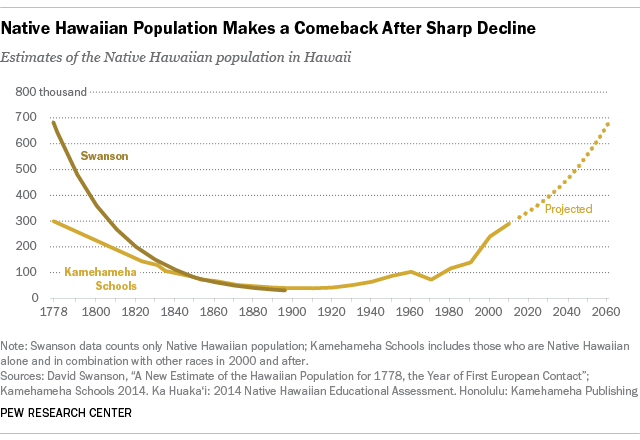Wikipedia says:
After Europeans and mainland Americans first arrived during the Kingdom of Hawaii period, the overall population of Hawaii, until that time composed solely of indigenous Hawaiians, fell dramatically. The indigenous Hawaiian population succumbed to foreign diseases, declining from 300,000 in the 1770s, to 60,000 in the 1850s, to 24,000 in 1920.
While this pattern seems to be similar to the fate of earlier "discovered" peoples in Latin America, since it took place in the late 18th and mostly 19th century I'd expect there were better historical records at that point in time, begging the question: Are there good analyses of this remarkable population decline that go beyond simple explanations like "diseases"?
Related: I also asked on the biology SE how populations can vary in their level of immunity to diseases (genetic inheritance vs. individually acquired immunity), the expert consensus seems to be that both mechanisms are in effect. https://biology.stackexchange.com/questions/76271/can-immunity-to-diseases-vary-by-populations
To clarify: I do not "doubt" the "mainstream narrative", I'd like to dive deeper into it. Please provide links for research.
To further clarify: Judging by the intial reaction, my poor wording seems to have produced much confusion, sorry for that. What I meant:
I never intended to claim that diseases did not constitute the single most important part of the explanation, but I consider(ed) it likely that there was an interplay between diseases, politics/warfare, social mores, maybe emigration and/or slave labor, etc.
I assumed that Hawaii would be an interesting exemplary case because events unfolded comparatively recently (better data/observations). I did not intend to imply that Hawaii was a singular or special case.
(Thank you everybody for your answers and help)
